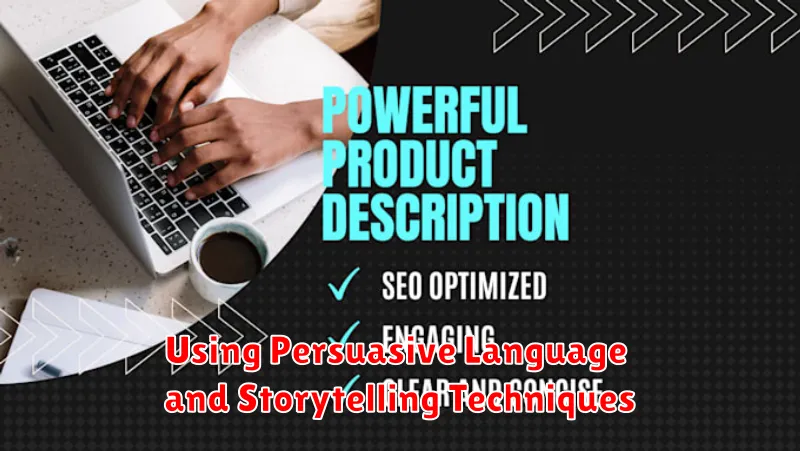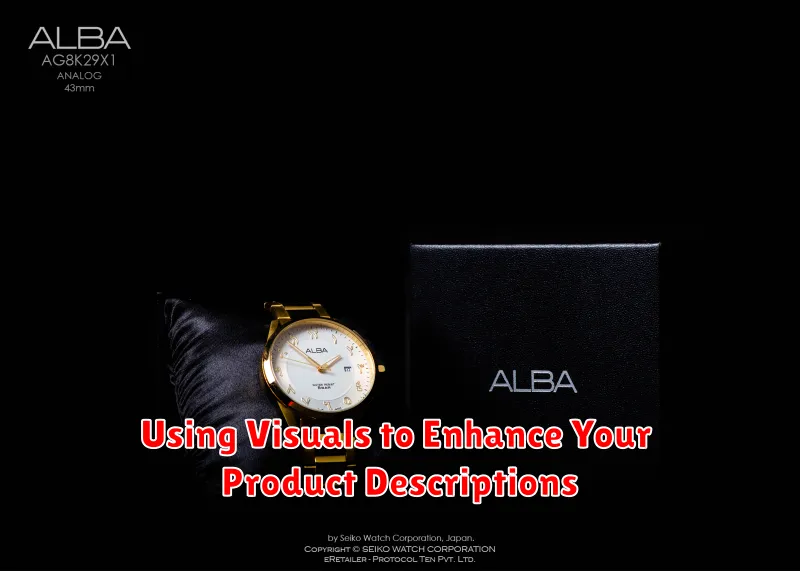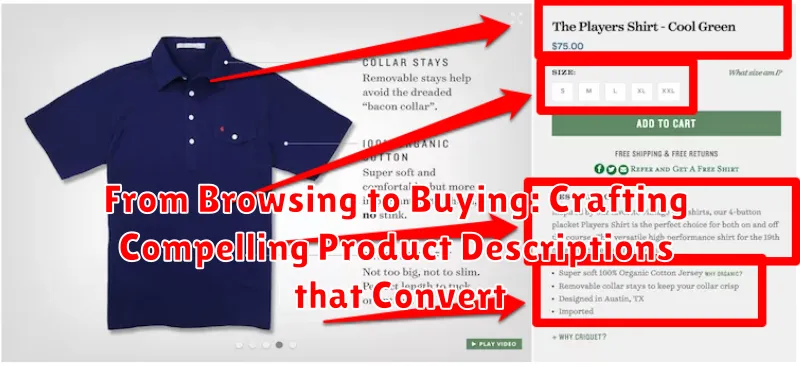In the competitive landscape of e-commerce, captivating product descriptions are paramount to driving sales. Product descriptions are more than just lists of features; they are powerful tools that influence purchasing decisions. They bridge the gap between browsing and buying, transforming casual shoppers into converted customers. This article explores the essential elements of crafting compelling product descriptions that not only inform but also persuade, ultimately increasing conversion rates and boosting your bottom line. Mastering the art of the product description is an investment in your brand’s success, turning product pages into effective sales platforms.
From highlighting key product features and benefits to employing persuasive language and incorporating effective SEO strategies, writing high-converting product descriptions is a multifaceted process. We will delve into the strategies for creating descriptions that resonate with your target audience, addressing their needs and desires while effectively showcasing the value proposition of your products. Learn how to optimize your product descriptions for both search engines and user experience, ensuring your products are easily discoverable and presented in a manner that encourages conversions. Transform your product descriptions from simple explanations into compelling narratives that drive buying behavior.
Understanding the Importance of Compelling Product Descriptions
Compelling product descriptions are crucial for converting browsers into buyers. They bridge the gap between seeing a product and wanting to own it. A well-crafted description doesn’t just list features; it paints a picture of how the product enhances a customer’s life.
Effective descriptions inform and persuade. They answer key questions, address potential concerns, and ultimately, compel customers to click “add to cart.” They serve as your silent salesperson, working 24/7 to drive sales and increase revenue.
Beyond the immediate sale, strong descriptions contribute to a positive brand experience. They build trust and establish your brand as an authority. This leads to increased customer loyalty and positive word-of-mouth referrals.
Identifying Your Target Audience and Their Needs
Before crafting a single word of your product description, you must clearly define your target audience. Understanding their demographics, psychographics, and online behavior is crucial. Who are they? What are their pain points? What motivates them to purchase?
Consider creating buyer personas to represent your ideal customer. Give these personas names, backgrounds, and motivations to make them feel real. This exercise allows you to personalize your product descriptions, speaking directly to the needs and desires of your target market.
Researching your audience is essential. Utilize website analytics, social media insights, and customer surveys to gather data. Understanding their language, preferences, and online behavior allows you to tailor your descriptions effectively. This data-driven approach ensures your message resonates and converts browsers into buyers.
Highlighting Key Features and Benefits in Your Descriptions
A compelling product description doesn’t just list features; it translates them into tangible benefits for the customer. Focus on what the product does for the buyer, not just what it is. Clearly articulate how each feature improves their life, solves a problem, or fulfills a need.
Start by identifying the most important features. Then, for each feature, ask yourself: “So what?” This helps you connect the feature to a direct customer benefit. For example, instead of simply stating “5-blade razor,” say “Our 5-blade razor provides a closer, smoother shave, reducing irritation and minimizing the time you spend shaving.”
Use strong action verbs and vivid adjectives to paint a picture of the benefits. Instead of “comfortable grip,” consider “ergonomic design for a secure, comfortable grip that reduces hand fatigue.”
Consider using a table or bullet points to clearly present features and their corresponding benefits. This allows for quick comprehension and easy comparison, especially for technical products.
Using Persuasive Language and Storytelling Techniques

Persuasive language is key to transforming a browser into a buyer. Employ power words that evoke emotion and create a sense of urgency. Words like “exclusive,” “limited-time,” and “discover” can significantly impact a customer’s decision-making process.
Storytelling breathes life into your product descriptions. Instead of simply listing features, weave a narrative that resonates with your target audience. Showcase the benefits of your product by illustrating how it solves a problem or enhances their lives.
Consider incorporating sensory details. Help customers imagine owning and using your product by describing its texture, scent, or the sound it makes. This immersive experience creates a stronger connection and fuels desire.
Use strong calls to action. Guide customers towards the desired outcome – making a purchase. Phrases like “Add to cart,” “Shop now,” or “Learn more” provide clear direction and encourage immediate action.
Optimizing Product Descriptions for Search Engines (SEO)
Optimizing your product descriptions for search engines is crucial for driving organic traffic and increasing visibility. By incorporating relevant keywords, you can improve your product’s ranking in search results and attract potential customers.
Keyword Research: Begin by conducting thorough keyword research to identify the terms your target audience uses when searching for products like yours. Tools like Google Keyword Planner can help you discover relevant keywords and assess their search volume and competition.
Strategic Keyword Placement: Integrate your chosen keywords naturally within your product descriptions. Include them in the title, the opening paragraph, and throughout the body of the text. However, avoid keyword stuffing, which can negatively impact your SEO.
Unique Descriptions: Write unique and informative descriptions for each product. Duplicate content can harm your search rankings. Craft original content that accurately reflects the product’s features and benefits while incorporating relevant keywords.
Optimized Product Titles: Create compelling and informative product titles that include relevant keywords. The title is the first thing potential customers see in search results, so make it count.
Structuring Your Descriptions for Readability and Scannability
Online shoppers rarely read product descriptions word-for-word. They scan. Structure your descriptions to cater to this behavior.
Use short paragraphs. Limit each paragraph to a single idea or key feature. White space improves readability and prevents your description from appearing as a dense block of text.
Highlight key features with bullet points. This allows shoppers to quickly grasp the essential information about your product.
Use headings and subheadings (like h3 and h4 tags) within your descriptions for longer, more complex products. This helps break down the information into digestible chunks and allows readers to quickly find the specifics they’re looking for.
Bold important words and phrases to draw attention to key selling points and specifications. Use this sparingly to maintain its effectiveness.
Using Visuals to Enhance Your Product Descriptions

Visuals are crucial for grabbing attention and showcasing your product’s key features. High-quality images are the cornerstone of effective visual storytelling. Showcase your product from multiple angles, highlighting important details and demonstrating its use.
Consider incorporating different visual formats. Videos can demonstrate functionality and provide a dynamic view of your product in action. Infographics can concisely present key features and benefits, especially for complex products. Interactive 360° views allow customers to virtually examine the product, fostering a deeper understanding.
Optimize your visuals for web performance. Large file sizes can slow down page load times, negatively impacting user experience. Compress images without sacrificing quality and ensure your visuals are mobile-friendly.
Visual consistency across your product pages builds brand recognition and creates a professional image. Maintain a consistent style in photography, videography, and graphics. Alt text for images is essential for accessibility and SEO purposes. Accurately describe the image content to improve discoverability.
A/B Testing Your Product Descriptions for Optimal Performance
A/B testing is crucial for optimizing your product descriptions and maximizing conversions. It involves comparing two versions of a description (version A and version B) to see which performs better.
Identify Key Metrics: Before starting, determine the metrics you’ll track. Focus on metrics directly related to sales, such as conversion rates, click-through rates, and average order value.
Create Variations: Develop different versions of your product description, altering elements like wording, length, formatting, and calls to action. Change only one element at a time to isolate its impact.
Test and Analyze: Run your A/B test for a significant duration to gather enough data. Analyze the results to determine which version performs better based on your chosen metrics.
Iterate and Refine: A/B testing is an ongoing process. Use the insights gained from each test to further refine your descriptions and continuously improve their performance. Implement the winning version and then test new variations against it.
Examples of Compelling Product Descriptions
Let’s examine a few examples demonstrating the principles of compelling product descriptions.
Example 1: A Cozy Throw Blanket
Instead of: “Soft blanket. Blue. 100% polyester.”
Try: “Wrap yourself in the luxurious warmth of our plush Serenity Throw. Crafted from 100% premium polyester, this incredibly soft blanket provides the perfect level of comfort for chilly evenings. The rich, deep blue hue adds a touch of elegance to any living space. Generously sized, the Serenity Throw is ideal for snuggling on the sofa or adding an extra layer of warmth to your bed.”
Example 2: A Durable Hiking Backpack
Instead of: “Hiking backpack. Large. Water resistant.”
Try: “Conquer any trail with the rugged and reliable TrekMaster 50L Backpack. Designed with the serious hiker in mind, this pack boasts a durable, water-resistant construction that safeguards your gear against the elements. The spacious 50L capacity provides ample room for all your essentials, while the adjustable ergonomic straps ensure a comfortable and customized fit. Embark on your next adventure with confidence, knowing the TrekMaster has your back.”

